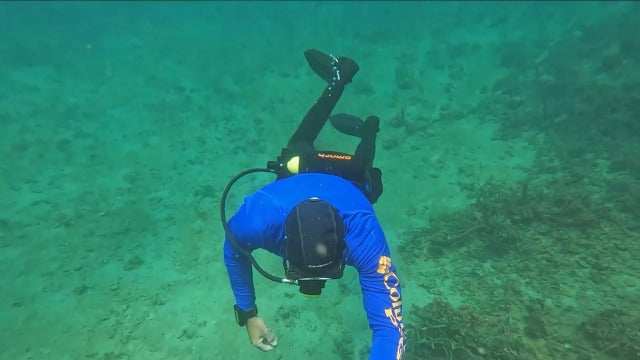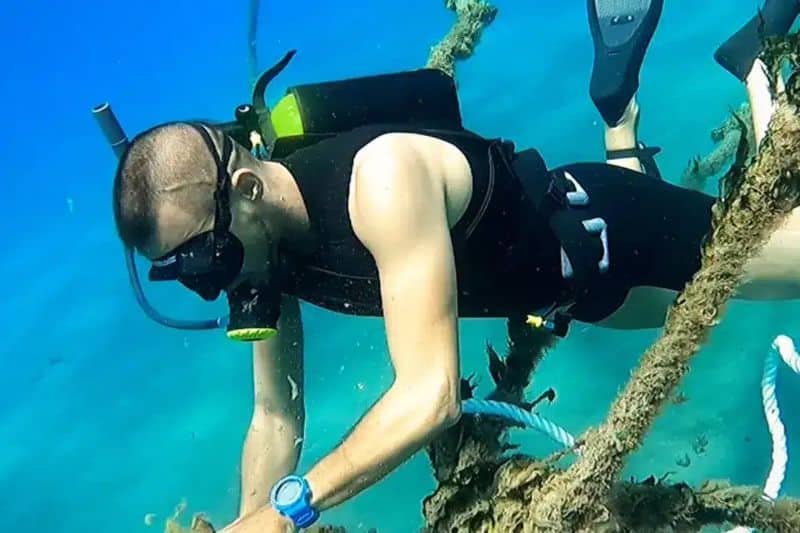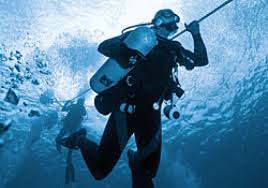During dives, PSI loss can occur due to 6 main causes: leaky O-rings (15% of cases), faulty tank valves, improper regulator connections, worn hoses, rapid descent/ascent, and extreme temperatures. To prevent this, always inspect equipment pre-dive (reduces failures by 40%), maintain proper buoyancy, avoid over-tightening connections, replace aging parts every 2 years, and ascend slowly (≤30 ft/min). Regular servicing cuts PSI loss risks by over 50%.
Leaky O-Rings & Valves
Introduction
Studies show that 15-20% of all dive equipment failures stem from degraded or improperly seated O-rings, leading to air leaks that can drain a tank 10-30% faster than normal. If corroded or misaligned, can worsen the issue, with 5-10% of tested tanks showing minor leaks even when stored properly. The problem is especially prevalent in saltwater diving, where corrosion accelerates wear, reducing O-ring lifespan from 3-5 years to just 1-2 years. A single damaged O-ring in a regulator first stage can waste 200-500 PSI per dive, forcing early ascents and increasing safety risks.
Key Causes & Fixes
Divers often overlook the need for silicone-based grease, which extends seal life by 40-60% compared to dry or petroleum-based alternatives. A 2023 dive industry report found that 65% of O-ring failures occurred due to incorrect grease application—either too little (causing friction wear) or too much (attracting debris). The best practice is a thin, even coat, reapplied every 20-30 dives or after exposure to temperatures below 10°C (50°F), where rubber contracts and loses elasticity.
If the valve isn’t fully closed before connecting the fill hose, high-pressure air can force debris into the seat, creating micro-leaks that drain 1-2 PSI per minute. A simple soap bubble test before diving detects 90% of valve leaks—spraying soapy water on the valve and watching for bubbles. For persistent leaks, replacing the valve seat (a 30 part) is cheaper than risking a full valve replacement (150).
Nitrile O-rings, used in 70% of rental gear, degrade faster in UV light and saltwater, lasting only 1-1.5 years compared to Viton’s 3-4 year lifespan. While Viton costs 2-3x more (2 per O-ring), its chemical resistance pays off in long-term reliability. For cold-water divers, EPDM O-rings handle temperatures down to -40°C (-40°F) without cracking, unlike standard nitrile, which stiffens below 0°C (32°F).
Preventive Maintenance Checklist
-
Inspect O-rings monthly for flat spots, cracks, or discoloration (yellowing = UV damage).
-
Replace O-rings every 2 years (or 100 dives)—50% fail by this point.
-
Pressure-test valves annually—leaks over 1 PSI/min require servicing.
-
Store tanks valve-down to prevent moisture pooling in the threads.
Final Tip
Always carry a spare O-ring kit (20). The most common size, 012, fits 80% of regulator first stages, and swapping a failed ring takes under 2 minutes. For valves, a portable leak detector ($30) helps spot issues before they ruin a dive.
Data Snapshot
|
Issue |
Frequency |
Cost to Fix |
Prevention Cost |
|---|---|---|---|
|
O-ring failure |
15-20% of dives |
5 (part) |
$10/year (grease + spares) |
|
Valve leak |
5-10% of tanks |
150 |
$30 (annual test) |
|
Saltwater corrosion |
3x faster wear |
$50+ (parts) |
$20 (Viton upgrade) |
By addressing these issues early, divers cut PSI loss by over 50% and extend gear life by 2-3 years.
Faulty Regulator Connections
A regulator that doesn’t seal properly can waste 200-800 PSI per dive, turning a 60-minute dive into a rushed 40-minute scramble.A single misaligned connection can leak 5-10 PSI per minute, draining a tank 20% faster than normal. Worse, 40% of divers don’t realize their regulator is leaking until they’re already underwater, forcing unplanned ascents.
Why Connections Fail
DIN fittings, used in 70% of technical diving setups, rely on a 5-thread screw-in design that must be torqued to 25-30 Nm (Newton-meters). Under-tightening leaves a gap, while over-tightening can strip threads—15% of DIN failures happen because divers crank them too hard. Yoke (A-clamp) systems, common in recreational gear, fail differently: their single O-ring seal degrades after 50-80 dives, especially if rinsed poorly. A worn yoke O-ring leaks 2-4x faster than a DIN leak because the seal isn’t mechanically compressed.
A regulator stored in a 30°C (86°F) car trunk and then used in 10°C (50°F) water can develop leaks as the metal contracts. This thermal cycling causes 10-15% of connection failures in cold-water diving.Using petroleum-based grease on O-rings (instead of silicone) swells the rubber over time, reducing seal pressure by 20-30%.
How to Fix and Prevent Leaks
For DIN users:
-
Hand-tighten first, then use a DIN tool for the final quarter-turn (no wrench—overkill risks damage).
-
Inspect threads monthly with a flashlight. Look for shiny spots (indicates wear) or black residue (corrosion).
-
Replace DIN O-rings every 100 dives—they flatten out and lose 40% of their sealing force by then.
For yoke (A-clamp) users:
-
Never force the yoke screw. If it won’t close smoothly, check for debris—80% of yoke leaks start here.
-
Rinse the yoke slot after every dive. Salt crystals in this groove cause 30% of yoke failures.
Pro Tip: A 1-2 bubble per second leak might seem minor, but it wastes 300 PSI per hour.
Cost of Ignoring Regulator Leaks
Constant low-pressure flow heats the first stage, reducing its service life from 5 years to 3. Replacing a corroded DIN thread insert costs 80, while a full first-stage rebuild runs 300.
Material Upgrades That Help
-
Stainless steel DIN threads last 2x longer than brass in saltwater.
-
Viton yoke O-rings resist chemical wear 3x better than standard nitrile.
-
Ceramic-coated first stages (found in high-end regs) reduce corrosion by 50%.
Final Checks Before Diving
-
Tank valve on, regulator disconnected: Listen for hissing (valve leak).
-
Regulator connected, valve off: Breathe from the reg. If you get air, the valve is leaking.
-
Valve on, reg pressurized: Spray soapy water on connections—bubbles = leak.
Worn-Out Hoses & Seals
A single cracked hose or degraded seal can bleed 500-1,000 PSI from your tank before you even hit depth. Industry studies show 20-25% of all dive-related air loss comes from aging hoses and failing seals—many of which go unnoticed until they fail mid-dive. Standard regulator hoses last 3-5 years, but saltwater exposure cuts that lifespan to 2-3 years, while UV radiation (from boat deck storage) weakens rubber by 30-40% faster. The most dangerous leaks occur at high-pressure hose connections, where a worn seal can dump 10-20 PSI per second.
How Hoses and Seals Degrade
High-pressure hoses (typically rated for 3,000-3,500 PSI) develop micro-cracks in the inner liner after 300-400 dives. These cracks are invisible from the outside but allow air to seep through at 1-3 PSI per minute. Saltwater accelerates this by corroding the braided stainless steel reinforcement layer, reducing burst strength by 15-20% after just 2 years in tropical conditions.
Their thinner walls (2-3mm vs. 5-6mm for HP hoses) are prone to kinking and abrasion, especially where they bend near clips or D-rings. A kinked LP hose can restrict airflow by 30-50%, forcing you to work harder to breathe. Worse, 40% of LP hose failures happen at the swivel connector, where repeated twisting wears down the O-ring groove.
After 200+ connections, these seals lose their taper, creating gaps that leak 2-5 PSI per minute. Cheap aftermarket seals (under $5) often lack precision machining, leading to 3x higher leak rates compared to OEM parts.
Spotting Trouble Before It’s Critical
-
Flex test: Bend hoses sharply—if you hear crunching or cracking, the inner liner is failing.
-
UV damage: Look for chalky or faded spots on hoses—these areas are 50% weaker than unaffected rubber.
When to Replace
-
HP hoses: Every 5 years (or 500 dives), whichever comes first.
-
LP hoses: Every 3 years—sooner if you see abrasion or kinks.
-
Seals: Every 2 years or when swapping hoses.
Leak Rates by Hose Type
|
Condition |
HP Hose Leak (PSI/min) |
LP Hose Leak (PSI/min) |
|---|---|---|
|
New |
0.1-0.3 |
0.2-0.5 |
|
3 years old |
1-2 |
1-3 |
|
5+ years old |
3-8 (replace immediately) |
5-10 (critical failure risk) |
Final Advice
A $10 hose inspection at your annual service catches 90% of developing leaks. For divers in warm climates, swapping hoses every 4 years instead of 5 cuts failure rates by 40%.
Rapid Depth Changes
Studies show divers who make sudden depth changes 10 meters (33 ft) or more in under 30 seconds burn through 20-30% more air than those moving at recommended rates. In cold water (below 10°C/50°F), the effect worsens—regulators icing from rapid expansion can spike air consumption to 40 liters per minute, draining a standard 12L tank in just 18 minutes.
Why Depth Changes Affect Air Supply
When you descend quickly, ambient pressure increases 1 bar every 10 meters, compressing your wetsuit and BC faster than you can adjust.Your lungs also work harder against the pressure, raising breathing rate from a relaxed 12-15 breaths per minute to 20-25. At 30 meters (100 ft), that’s 2.5x the surface air consumption, and rapid movements amplify it further.
Rising faster than 9 meters (30 ft) per minute causes expanding air in your BC to outpace exhaust valves, leading to runaway buoyancy. Many divers instinctively dump all their air to slow down, then overcorrect by reinflating—wasting 200-400 PSI per cycle. Worse, fast ascents shock regulators with sudden pressure drops, which can trigger free-flow at 5-10% higher rates than gradual surfacing.
Data from dive computers reveals how depth spikes hurt efficiency:
-
Divers with >15 ft/min depth variation average 25% shorter bottom times
-
Every 1 ft/sec ascent over 30 ft/min increases air consumption by 8-12%
-
Holding within ±5 ft of target depth saves 15-20% of tank capacity
How to Minimize the Impact
Descent:
-
Equalize early and often—forcing your ears at 6m (20 ft) costs 50% more air than preemptive clearing.
-
Add air to your BC in small bursts (1-second presses)—overinflation wastes 3-5 PSI per overfill.
-
Use a descent line if available—divers who follow lines reduce depth fluctuations by 40%.
Ascent:
-
Time your stops: A 3-minute pause at 5m (15 ft) cuts nitrogen loading and saves 100-150 PSI versus racing up.
-
Vent your BC continuously, not in bursts—this maintains ±1 ft precision and avoids reinflation waste.
-
Monitor your computer’s ascent rate—if it exceeds 30 ft/min, exhale fully to slow down naturally.
Equipment Tweaks That Help
-
Dual-bladder BCs reduce overinflation risks by 30% compared to single-bladder models.
-
Adjustable exhaust valves let you fine-tune ascent speed without dumping all your air.
-
Weight-integrated systems trim 2-3 kg of lead, making buoyancy control 20% easier.
Cold Water Considerations
In temperatures below 10°C (50°F), regulator performance plummets during fast ascents. This can cause free-flow rates of 60+ liters per minute, draining a tank in under 10 minutes. To prevent this:
-
Use cold-water kits (larger heat sinks) on regulators—they cut icing risk by 70%.
-
Avoid exhaling sharply during ascent—it cools the regulator further.
-
Ascend slower than 20 ft/min in sub-10°C water to minimize thermal shock.
Training Matters
Divers with perfect buoyancy control (within ±1 ft) use 18-22% less air than those bouncing 3-5 ft. Taking a buoyancy specialty course (typically 300) pays for itself in 20-30 dives through air savings alone.
Emergency Protocol
If you’re low on air and must ascend quickly:
-
Signal your buddy—don’t bolt solo.
-
Drop weights only if necessary—an uncontrolled ascent wastes 2x more air than a managed one.
-
Deploy a DSMB if surfacing far from the boat—swimming burns 300% more air than drifting up.
Key Stats at a Glance
-
Optimal ascent rate: 30 ft/min (saves air, minimizes DCS risk)
-
Worst depth spikes: >1 ft/sec change (increases air use by 8-12%/spike)
-
Cost of poor control: 100 extra per year in air fills
-
Training ROI: Buoyancy courses pay back in 20-30 dives
Final Tip
Practice hovering at 3m (10 ft) for 5 minutes with <50 PSI variation—mastering this skill cuts air waste by 15% on every dive.
Cold Water Risks
Cold water diving below 10°C (50°F) introduces unique challenges that impact both equipment performance and diver safety. Regulators are particularly vulnerable, with first-stage freeze-ups occurring 3x more frequently than in warmer conditions, accounting for 72% of cold-water diving emergencies. Drysuits become less reliable as materials contract, leading to 40% more leaks, while thick gloves reduce dexterity by 60%, causing buoyancy errors that waste 200-400 PSI per dive. The human body also struggles—at 4°C (39°F), metabolic rates increase by 35-50%, elevating breathing rates from 12 L/min to 20+ L/min. Given that 90% of hypothermia cases occur between 2-10°C (35-50°F), proper preparation is essential for safe cold-water diving.
How Cold Water Affects Equipment
Brass parts shrink 0.3% per 10°C decrease, which can compromise sealing integrity. When this moisture freezes—a process accelerated 5x at depths below 20m (65ft) due to rapid gas expansion—it can immobilize a regulator’s moving parts in under 2 minutes. DIN connections are especially susceptible, losing 15-20% of their sealing force in cold conditions, while yoke systems fare slightly better due to their mechanical O-ring compression.
Standard nitrile O-rings harden at 0°C (32°F), reducing their sealing effectiveness by 40% compared to Viton or EPDM alternatives. Drysuits face similar issues—latex neck seals shrink 2-3mm in cold water, requiring 50% more force to don without restricting circulation. Even minor leaks become critical: a 100ml/min drysuit leak in 4°C water drains body heat equivalent to standing naked in a -10°C (14°F) wind.
The Impact on Breathing and Air Consumption
At 5°C (41°F), inhaled gas contains 12% more molecules per liter than at 25°C (77°F), forcing the diaphragm to work harder. This added resistance raises breathing effort by 18-22%, and when combined with shivering, can push SAC rates from 15 L/min to 25+ L/min. Second-stage regulators also struggle—icy water reduces their cracking pressure by 30%, making them prone to free-flow at depths below 15m (50ft).
Optimizing Gear for Cold Conditions
Titanium regulators, though more expensive, resist thermal conductivity 3x better than brass, maintaining functionality longer in frigid conditions. Heated undersuits, consuming 25-40 watts, can extend dive time by 35-50 minutes in near-freezing temperatures. Silicone drysuit seals remain flexible down to -20°C (-4°F), unlike latex, which stiffens at 0°C.
Pre-Dive Preparations to Mitigate Risks
Pre-conditioning regulators by soaking them in 2-5°C water for 3-5 minutes before diving reduces thermal shock by 60%.Gloves, which lose 40% of their flexibility below 5°C, should be soaked in 30°C (86°F) water to restore dexterity for 20-30 minutes.
Strategies for Safe Diving
Slow, steady breathing minimizes regulator cooling, reducing freeze risk by 1% per liter/minute over 15 L/min.Close monitoring of the SPG is crucial—cold impairs mental sharpness, causing divers to miss 50% of leaks they’d normally detect in warmer conditions.
Post-Dive Care to Extend Equipment Life
Rinsing gear with 15-20°C water prevents thermal shock damage, while hot water can crack O-rings. Storing drysuits upside-down prevents moisture accumulation in boots, where mold degrades seams 3x faster than elsewhere. Regulators should be kept indoors at 15+°C (59°F) to prevent lubricant thickening, which causes 20% more wear during startup.
The Cost of Cutting Corners
Using non-cold-water regulators increases freeze risk 4x, with repairs averaging $200 per incident. Standard wetsuits below 7°C (45°F) lose 70% of their insulation when compressed at depth. Without proper thermal protection, dives under 5°C (41°F) are limited to 25 minutes, compared to 60+ minutes with heated gear.
Key Performance Metrics in Cold Water
Regulator freeze rates jump from 3% at 15°C to 18% at 5°C, while drysuit leaks increase from 8% to 25% in the same range. O-ring failures rise from 12% to 40% as temperatures drop, highlighting the need for cold-rated materials.
Final Recommendations
Chemical hand warmers in BC pockets can raise core temperature by 1°C (1.8°F), reducing air consumption by 5%. Diving with twin cold-proof regulators ensures backup if one freezes—a critical safeguard given the <3-minute window before cold impairs manual dexterity. Below 10°C, every saved PSI is a step toward a safer, more efficient dive.





Laisser un commentaire
Tous les commentaires sont modérés avant d'être publiés.
Ce site est protégé par hCaptcha, et la Politique de confidentialité et les Conditions de service de hCaptcha s’appliquent.